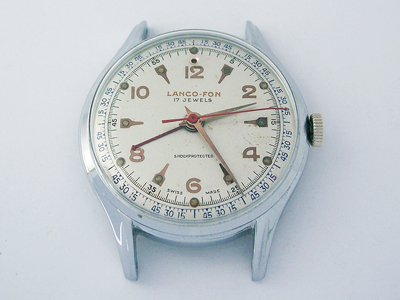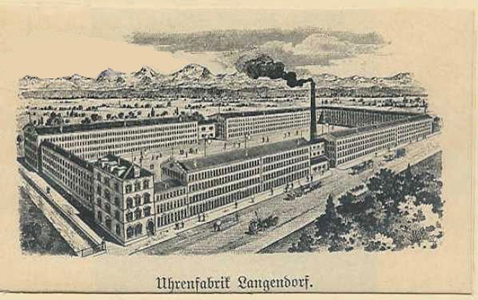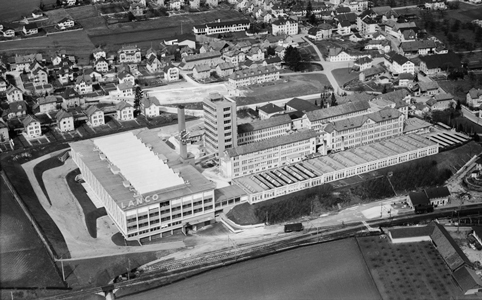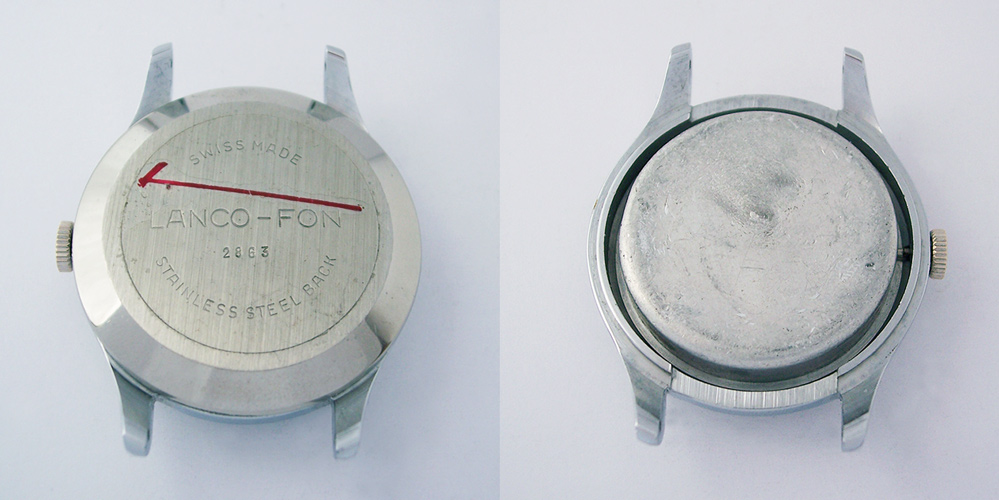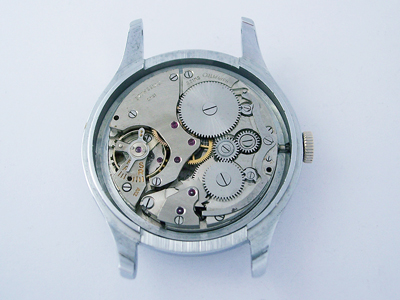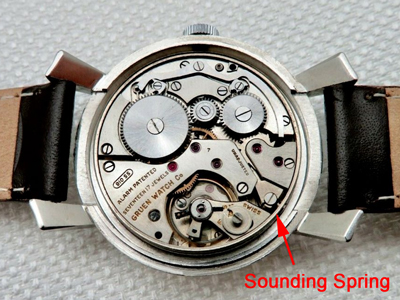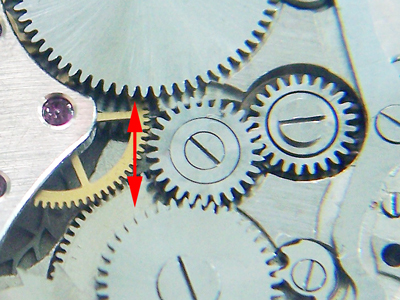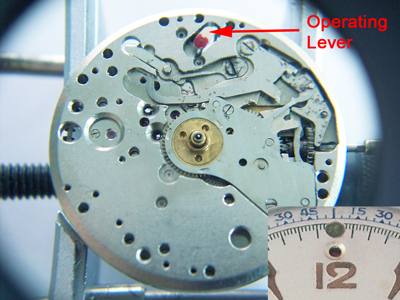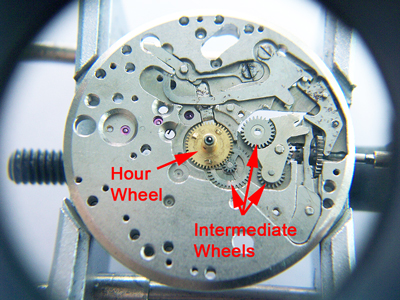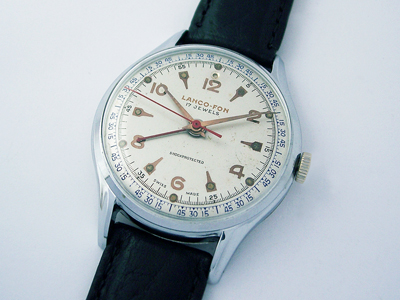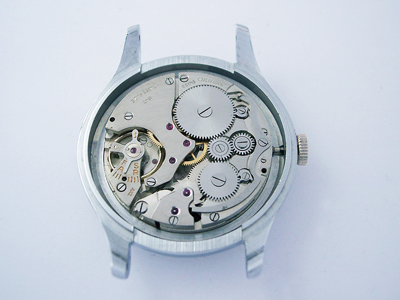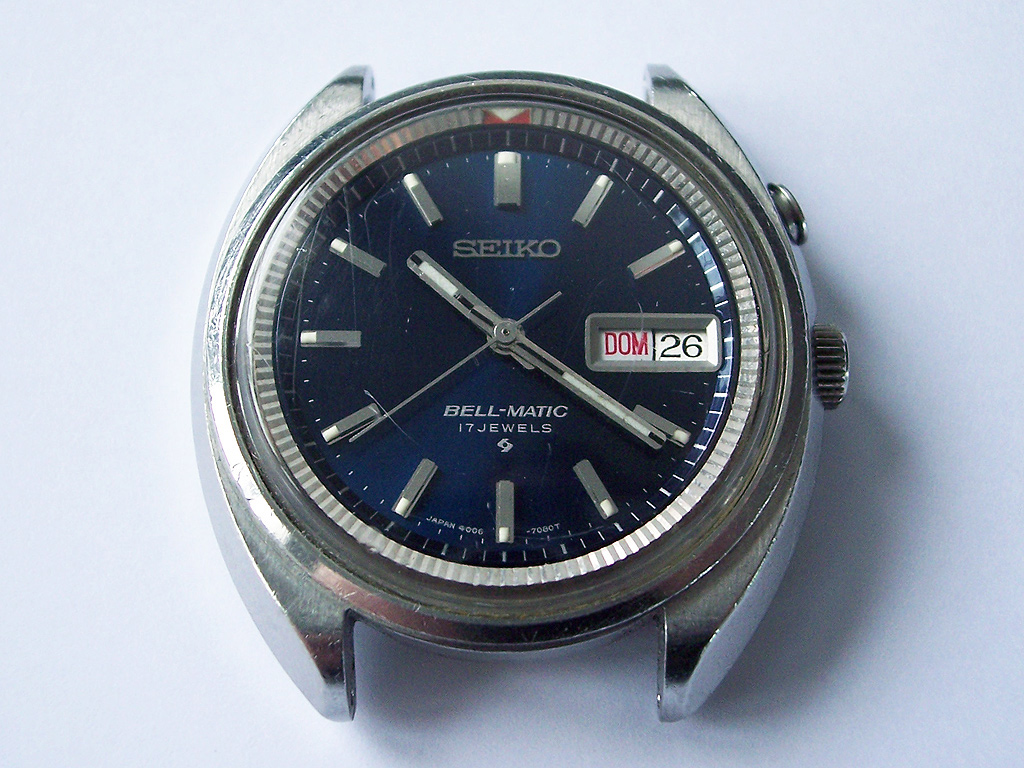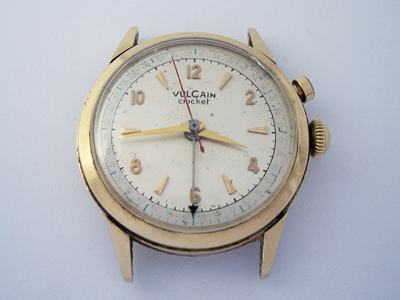The vintage watch world is full of surprises, including this Lanco-Fon, a watch from the 1960’s that I’d never heard of before.
(Click pictures to enlarge)
Being a fan of vintage mechanical alarm watches, I thought I was aware of every commercially produced alarm calibre, but this one, the Langendorf cal. 1243, was a new discovery for me.
Uhrenfabrik Langendorf SA was founded Colonel Johann Viktor Kottmann, in 1873, to produce watch parts for the local watchmaking industry. Following an economic collapse in 1880, the business was taken over by Johann’s son, Karl Kottmann, who transformed the company in short order by attracting specialists from western Switzerland.
Orders quickly increased, production facilities were expanded and by the late 1880’s, the company employed around 1000 people and was supplying parts and ebauches to all the major watch producing companies to the Neuchâtel area.
Karl Kottmann died in 1890 and control passed to Lucien Tieche, who subsequently changed the name to the Langendorf Watch Company. Success continued apace and by 1916 the company employed 1,500 people, producing around 3000 timepieces per day.
The “Lanco” brand was launched during the 1950’s as an abbreviation of Langendorf Watch Company, and their sales success attracted the attention of the SSIH Group, who bought the company in 1965 and used Langendorf’s automated production line to broaden its range and manufacture high quality products at a reduced cost.
Due to the emerging quartz revolution, production was scaled back significantly in the early 1970’s, and manufacturing stopped altogether at the Langendorf production facility in 1973. The factory building was sold off in 1977 and converted into a shopping centre (which still exists on the site today.)
The SSIH Group continued to produce Lanco branded watches throughout the 1970’s, mostly powered by calibres from other suppliers such as ETA, A. Schild and Valjoux, and the final curtain was drawn on Lanco in 1981, when brand name was sold off due to financial difficulties within the group.
Getting back to the subject of this post, the watch arrived running, but keeping poor time. The first thing to note on this watch is the construction of the case. Turning the watch over, you are met with a standard snap back case, which when removed reveals an inner shield, similar to ones seen on some military and diving watches.
This shield performs two functions in this watch. As well as protecting the movement from dust and water ingress (no internal gaskets in this watch), it also serves as the amplifier for the alarm.
There is no sounding spring as you would find in a Seiko Bell-Matic, or an echo chamber as you would find on a Vulcain Cricket, the hammer in this watch simply strikes the internal cover and the alarm buzzes rather than resonates.
With the dust cover removed, the calibre inside is a Langendorf cal. 1243; a 17 jewel manually wound calibre with a beat rate of 18,000 bph. In the same calibre family are the cal. 1241 and 1244, which have minor technical differences, but operate exactly the same way.
The same calibre was also used by Gruen in the USA, but was badged as the cal. 910SS. Comparing the two calibres, there are a few technical differences, including the addition of a sounding spring surrounding the movement to amplify the alarm.
What makes this movement interesting, and different to the majority of mechanical alarm calibres, is that all the winding and setting functions for both the timekeeping and alarm complications are performed using a single winding crown.
With the crown pushed all the way in, winding the crown forwards adds power to the alarm mainspring and winding the crown backwards adds power to the watch mainspring. There is an intermediate wheel between the ratchet wheels for both barrels which moves back and forth depending on the winding direction.
When winding the crown, there is initially a small amount of resistance felt which is the alarm operating lever moving, effectively the ‘on/off’ switch for the alarm. The operating lever serves two purposes, it arrests the hammer mechanism, preventing the alarm triggering when the alarm is ‘off’, and an extended section of the lever protrudes through to the dial side of the movement, displaying a red dot on the dial under the 12 marker to indicate that the alarm is set – similar to the dial aperture on the Fortis Centinela alarm that I wrote about several years ago.
When the winding crown is pulled out to the first position, the alarm time can be set in an anti-clockwise direction by rotating the crown backwards and finally, the time can be set by pulling crown out to the second position.
The triggering mechanism is located underneath the central plate and like most alarm calibres, the hour wheel has three raised sections, which slot into holes in the alarm setting wheel when the alarm time is reached. Under the hour wheel is a spring, the tension from which is released when the hour and alarm setting wheel align, the alarm disconnecting lever is raised, releasing power from the alarm mainspring through to the hammer mechanism on the going side of the calibre.
With regards to the keyless works, with the crown pulled out to position one, the intermediate wheels couple the crown wheel to the alarm setting wheel, and in position two, the setting lever pivots, bringing the intermediate wheels into contact with the hour wheel to set the time.
This excellent video from ArcherWatches shows all the functions in action.
The watch needed nothing more than a routine service this time to bring it back into line, which in truth was a relief as finding parts for this calibre would have been very difficult indeed.
As always, the case was cleaned and the crystal polished before the watch was rebuilt, tested, and returned to its owner.
Rich.
** Many thanks to John King for letting me feature his watch on the blog. **

